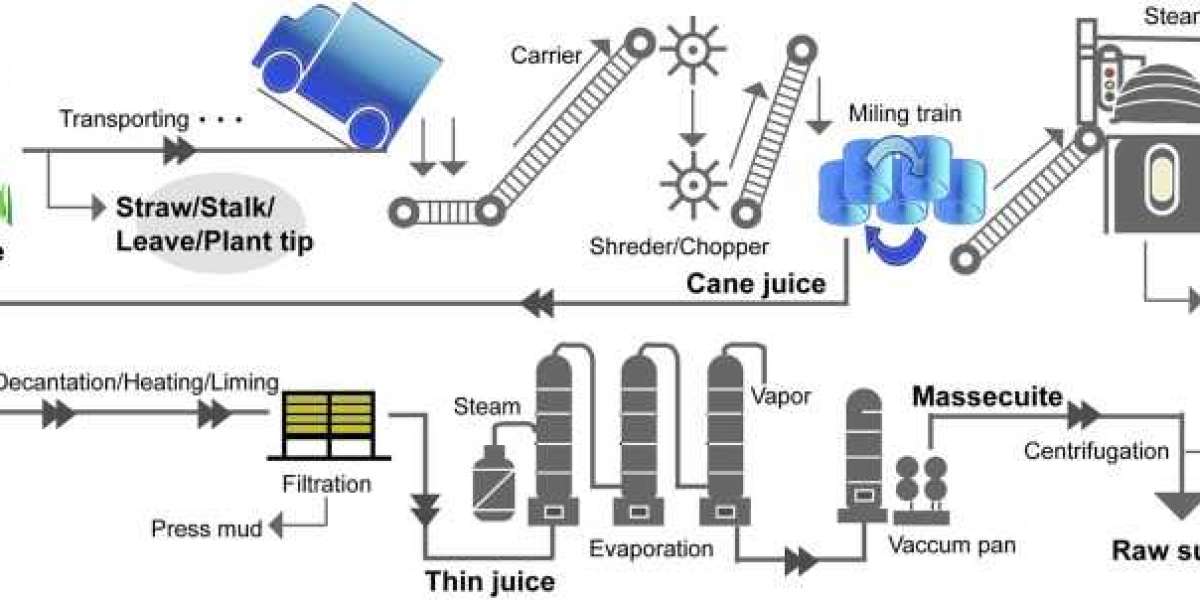The circular economy is a transformative approach to traditional production and consumption, aiming to minimize waste and make the most of resources. In contrast to the linear economy—based on a take-make-dispose model—the circular economy promotes the reuse, recycling, and sustainable management of materials. One key contributor to this shift is the rise of bagasse products, which play an essential role in closing the loop on waste and resource efficiency.
Bagasse, the fibrous byproduct of sugarcane processing, has emerged as a valuable raw material in the production of sustainable products such as packaging, tableware, and building materials. This article delves into how bagasse products contribute to the circular economy and explores their environmental, economic, and social benefits.
1. Bagasse as a Byproduct: Turning Waste into Value
Bagasse is the leftover material after sugarcane stalks are crushed to extract juice. Traditionally, it was either burned for energy or discarded, contributing to environmental pollution. However, the growing demand for sustainable materials has turned bagasse into a valuable resource.
In the circular economy, one of the core principles is turning waste into a resource, and bagasse is a perfect example of this. By utilizing this waste byproduct, manufacturers can reduce the reliance on virgin raw materials, thus cutting down on deforestation, energy use, and the carbon footprint associated with producing new materials.
Key benefits of bagasse in this context include:
- Reduction of Waste: Instead of being burned or left to decompose, bagasse is now repurposed, creating a closed-loop system that aligns with the circular economy.
- Energy Efficiency: The production of bagasse-based products requires less energy compared to traditional paper and plastic manufacturing processes.
Bagasse is also biodegradable, offering an environmentally friendly alternative to plastics and Styrofoam, which are notorious for their long-term environmental damage.
2. Circularity in Bagasse-Based Packaging
One of the most popular uses of bagasse is in the production of eco-friendly packaging. Companies are increasingly adopting bagasse for packaging due to its versatility and sustainability. The global shift away from single-use plastics has spurred innovation, leading to the development of bagasse-based cups, plates, takeout containers, and more.
These products stand out in the circular economy for several reasons:
- Biodegradability: Bagasse products decompose naturally within 60 to 90 days, unlike plastic, which can take centuries to break down. This makes them ideal for composting, contributing to the regenerative cycle of nutrients in the soil.
- Recyclability: Some bagasse products can be recycled alongside paper, further closing the loop in material reuse.
- Energy Efficiency in Disposal: Even if bagasse products end up in landfills, they break down quickly and emit significantly less methane compared to other materials like plastic. Furthermore, bagasse products can be composted, returning valuable nutrients to the soil.
Companies like Growood, which specialize in sustainable packaging solutions, have championed the use of bagasse, demonstrating its viability and scalability as an alternative to traditional materials. These innovations not only reduce reliance on non-renewable resources but also help establish systems that prioritize resource regeneration over waste.
3. Reducing the Carbon Footprint of Manufacturing
The process of converting sugarcane into bagasse products is relatively low in carbon emissions. Compared to plastics and other conventional materials, bagasse production has a far smaller carbon footprint due to several factors:
- Renewable Resource: Sugarcane, from which bagasse is derived, is a renewable crop that grows annually, reducing the environmental strain from harvesting.
- Lower Energy Use: The energy required to transform bagasse into packaging materials or tableware is significantly lower than for petroleum-based products like plastic.
- Offsetting Emissions: Some bagasse-producing facilities use the energy generated from burning bagasse during the sugar refining process to power their operations, reducing the need for fossil fuels.
Moreover, bagasse is often sourced locally, minimizing the carbon emissions associated with long-distance transportation. This localization aligns with circular economy principles that prioritize reducing emissions and transportation costs, thereby improving the overall sustainability of the supply chain.
4. Economic Benefits and Job Creation
Beyond its environmental benefits, the adoption of bagasse products also presents significant economic opportunities. Developing countries that produce large quantities of sugarcane—such as Brazil, India, and Thailand—stand to benefit the most from the rise of bagasse products.
Key economic advantages include:
- Job Creation: The growing demand for sustainable packaging and products has resulted in increased employment opportunities in the manufacturing and agricultural sectors. Workers involved in sugarcane farming, processing, and bagasse-based product manufacturing benefit from expanded markets.
- Value Addition: By repurposing bagasse, sugarcane-producing countries can add value to their raw materials, transforming what was once considered waste into profitable commodities. This creates opportunities for economic growth and diversification.
- Supply Chain Development: Local production and manufacturing of bagasse products reduce dependence on imported materials, boosting local industries and supporting small-scale enterprises.
Countries and businesses that adopt circular economy practices, such as repurposing agricultural waste, can build more resilient economies while also contributing to global sustainability goals.
5. Closing the Loop: Compostability and Soil Health
Bagasse products have the unique advantage of being compostable, which means they can return valuable nutrients to the soil when broken down. This aspect of bagasse aligns with the circular economy’s focus on regenerating natural systems.
When composted, bagasse products decompose into organic matter that can improve soil quality. This process helps enhance soil fertility, supports agricultural productivity, and reduces the need for chemical fertilizers. In areas where sugarcane is grown, bagasse composting can complete the cycle from crop to product and back to the earth, embodying the principles of regenerative agriculture.
6. Challenges and Opportunities for Growth
While the potential of bagasse products within the circular economy is immense, there are still challenges to overcome:
- Scaling Production: The infrastructure for large-scale bagasse production is still developing in many parts of the world. Greater investment is needed to expand production capacities and make bagasse products more widely available.
- Public Awareness: Although sustainable materials are gaining traction, consumer awareness around bagasse remains relatively low. More education is needed to drive demand for bagasse-based products over traditional alternatives.
- Cost: While bagasse products are generally more cost-effective than other eco-friendly alternatives, they can still be pricier than conventional plastic or Styrofoam products. Lowering costs through increased production and technological advancements is crucial for broader adoption.
However, the ongoing efforts by companies like Growood and others in the green industry signal a growing commitment to making bagasse an integral part of the global circular economy.
Conclusion
Bagasse products represent a promising step toward a circular economy by transforming agricultural waste into valuable, sustainable goods. They reduce reliance on finite resources, lower carbon emissions, and create economic opportunities, particularly in developing countries. Additionally, their biodegradability and compostability align with the circular economy's goal of regenerating natural systems.
As technology improves and awareness grows, bagasse could play an increasingly vital role in shaping a sustainable future. By supporting industries like Growood and encouraging the development of bagasse products, we can move closer to a circular economy that balances human consumption with environmental preservation.








